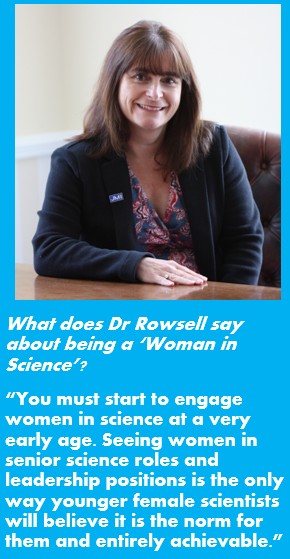Materials Science
Driving innovation in a complex world 12th September 2019
By Liz Rowsell, Johnson Matthey’s Corporate R&D Director
Liz Rowsell, Johnson Matthey’s Corporate R&D Director, shares insights into her 26-year career at Johnson Matthey.
Liz Rowsell, Johnson Matthey’s Corporate R&D Director, shares insights into her 26-year career at Johnson Matthey.
Liz Rowsell joined Johnson Matthey (JM) in 1993 as a Research Scientist, after completing her PhD in Chemistry at the University of Essex (UK). We spoke to Liz about her career, her current role as Corporate R&D Director, innovation and her thoughts on being a ‘woman in science’.
Q: You began your career at JM as a Research Scientist – what drew you to the company, and what projects did you work on?
I was always interested in biological/medicinal chemistry and heard that the JM Biomedical Group had openings for someone to work on ruthenium chemistry. I was aware of JM from their metals loan scheme, which allowed academics and students access to small amounts of platinum group metal to perform their research. I was interviewed at the Johnson Matthey Technology Centre and was immediately excited by the prospect of applying my science to make a positive impact.

I began working on understanding the role of nitric oxide as a chemical messenger in the body, and its role in the progression of sepsis. It was a fabulous project to be given as a young scientist, allowing me to travel and work with an amazing team.
When I look back at the younger me, I was ambitious, but was always very self-aware. I was not afraid to decline a role that I did not believe was right for me, or that I did not feel I was right for.
Q: In your current role, you are responsible for ensuring that JM meets its objectives for R&D, and for improving existing products. How do you decide where JM should focus its R&D efforts?
I work closely with my technical and commercial colleagues in our businesses and with our Group strategy team. We strive to understand our customers’ needs – today and in the future – in what is a very complex world.
Part of my role is to build the technical capabilities that will help JM maintain a competitive advantage, but also to consider the capabilities and skills we will need to take us into our third century. Scientists are naturally curious and will always want to know more, so sometimes the hardest thing is knowing when to stop.
Q: How important is collaboration with other private or public entities in achieving scientific progress?
It is essential. We are a collaborative organization, we work with customers, universities, trade associations and learned bodies. Innovation is an iterative process; you build on knowledge and expertise to create value from your science. The concept that science has no barriers is only viable if you actively reach out and work collaboratively. It is often easy to be insular, which can make it harder to take the initial steps to reach out to others. However, it is far more rewarding if you work collaboratively in the long run.
Britain has top class talent in academia and industry, but innovation is not subject to geographical boundaries. We must ensure that we are able to work with our colleagues wherever they are based, to invent and create technology that has a positive impact on our world. Legislators and leaders have a key role in listening and enabling scientists to work together for value creation.
Q: Being a Member of Innovate UK’s Advanced Materials Leadership Council must keep you at the cutting edge – where do you think the most promising opportunities lie?
I have enjoyed my involvement with the Advanced Materials Leadership Council, working with colleagues across sectors to understand our strengths in advanced materials and the actions needed to enable the UK to create the right framework to maximize R&D investments.
I think the most promising opportunities often arise from disruption, or at the interface of disciplines. JM is actively creating opportunities through applying material science in the evolving automotive power train with our work in emission control catalysis, battery materials and fuel cell technology. Transport is changing, and the appropriate solutions will be driven by geography, consumer needs and environmental impact. At JM, we are applying our cutting-edge science to provide material solutions that enable our customers to make a real difference to the world around us.
I am also intrigued by the opportunities that present themselves for chemists who are fluent in biology, physics and software science at a time when digitalization and the drive to understand the impact we have on our planet is imperative.
Q: In the modern world, it is rare to find someone who has stayed with one company for their whole career. How has JM managed to retain you for 25 years?
I think it is simple. I have been allowed to be creative and responsible for my own actions, the science is fascinating and has real impact, and I work with genuinely decent people.



